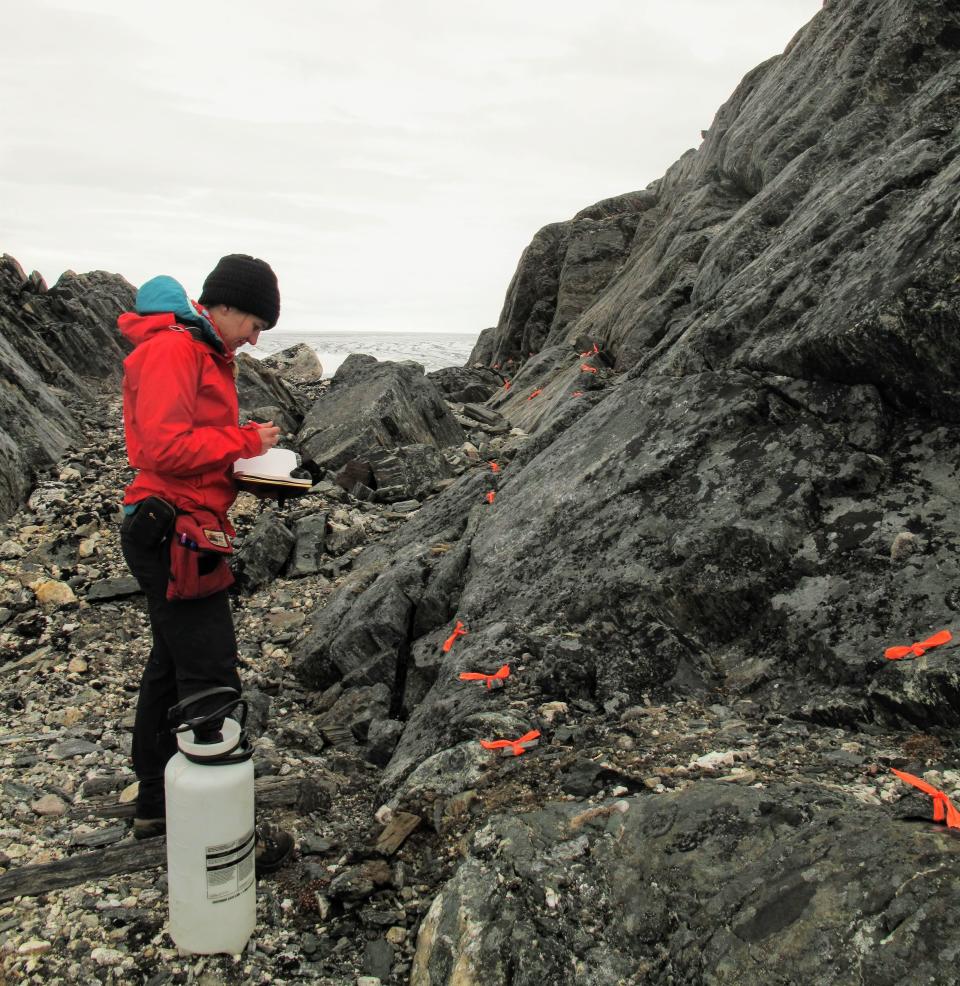A 3.7 billion-year-old record of our planet’s ancient magnetism has been discovered, providing evidence that Earth’s magnetic field already existed very early in history. This discovery, however, is quite surprising.
Rocks approximately 4 billion years old are difficult to find; most were recycled through Earthtectonic activity, sliding into the mantle through subduction zones before being expelled back by volcanoes. Yet somehow, a sequence of rocks in Greenland’s Isua Supracrustal Belt has survived the ravages of time thanks to its unique geology, sitting atop a thick continental plate, like a life raft in the middle of a sea. ocean of tectonic upheavals.
Now, researchers from the University of Oxford and the Massachusetts Institute of Technology have unearthed some of these Isua rocks, discovering that they contain a solid record of early Earth’s magnetic field. According to this record, our planet’s magnetic field doesn’t appear to have changed much since then – but geologists don’t fully understand how Earth could have produced a magnetic field back then.
Related: Earth was hit by cosmic rays 41,000 years ago due to a weak magnetic field
The existence of a magnetic field is crucial to the development of life on Earth, with field lines warding off the dangerous rain of charged particles blown towards us through the Earth. solar wind. The existence of a primitive magnetic field could have helped life establish itself on our planet.
Previously, estimates and suggestions of early Earth’s magnetic field came from individual mineral crystals called zircons, found in ancient rocks in Western Australia. These suggested the existence of a magnetic field 4.2 billion years ago. However, these results were later questioned as unreliable.
The new results obtained from Greenland rocks are considered more reliable because, for the first time, they rely on whole iron-bearing rocks (rather than individual mineral crystals) to derive the strength of the primordial field. Therefore, the sample offers the first solid measurement not only of the strength of Earth’s ancient magnetic field, but also of the time at which the magnetic field originally appeared.

“Extracting reliable records from rocks this old is extremely challenging, and it was really exciting to see primary magnetic signals start to emerge when we analyzed these samples in the laboratory,” said lead researcher Claire Nichols, who is professor of planetary geology at the University of Oxford. , on a Press release. “This is a really important step as we try to determine the role of the ancient magnetic field when life on Earth was emerging.”
The iron particles within Isua’s rocks can be thought of as small magnets, aligning with Earth’s magnetic field when the surrounding rock first crystallized 3.7 billion years ago. Its alignment therefore keeps track of the field strength. This strength is measured to have been at least 15 microtesla (mT), which is comparable to Earth’s field strength of 30 mT today.
However, this still leaves the previous puzzle: how did the early Earth produce its magnetic field?


Related stories:
— Debris from burning satellites may be affecting Earth’s magnetic field
– NASA ends CloudSat Earth observation mission after 18 years
— 365 days of satellite images show Earth’s seasons changing from space (video)
Today, this field is produced by the dynamo effect generated by electrical currents in Earth’s molten iron outer core, an effect brought about by buoyant forces as the planet’s inner core cools and solidifies. However, the inner core only cooled enough to start solidifying about a billion years ago; 3.7 billion years ago, it could not have influenced a dynamo effect in the same way as it does today. In short, how Earth’s ancient magnetic field was generated remains a mystery.
Fortunately, it was indeed generated and certainly helped early microbial life survive and evolve. The solar wind was stronger in the past than it is today, but over time the Earth’s magnetic field would have been able to face it, creating conditions for life to leave the oceans, where it was protected from harmful effects. radiation and to the earth.
The results were published on April 24 in Journal of Geophysical Research.

































